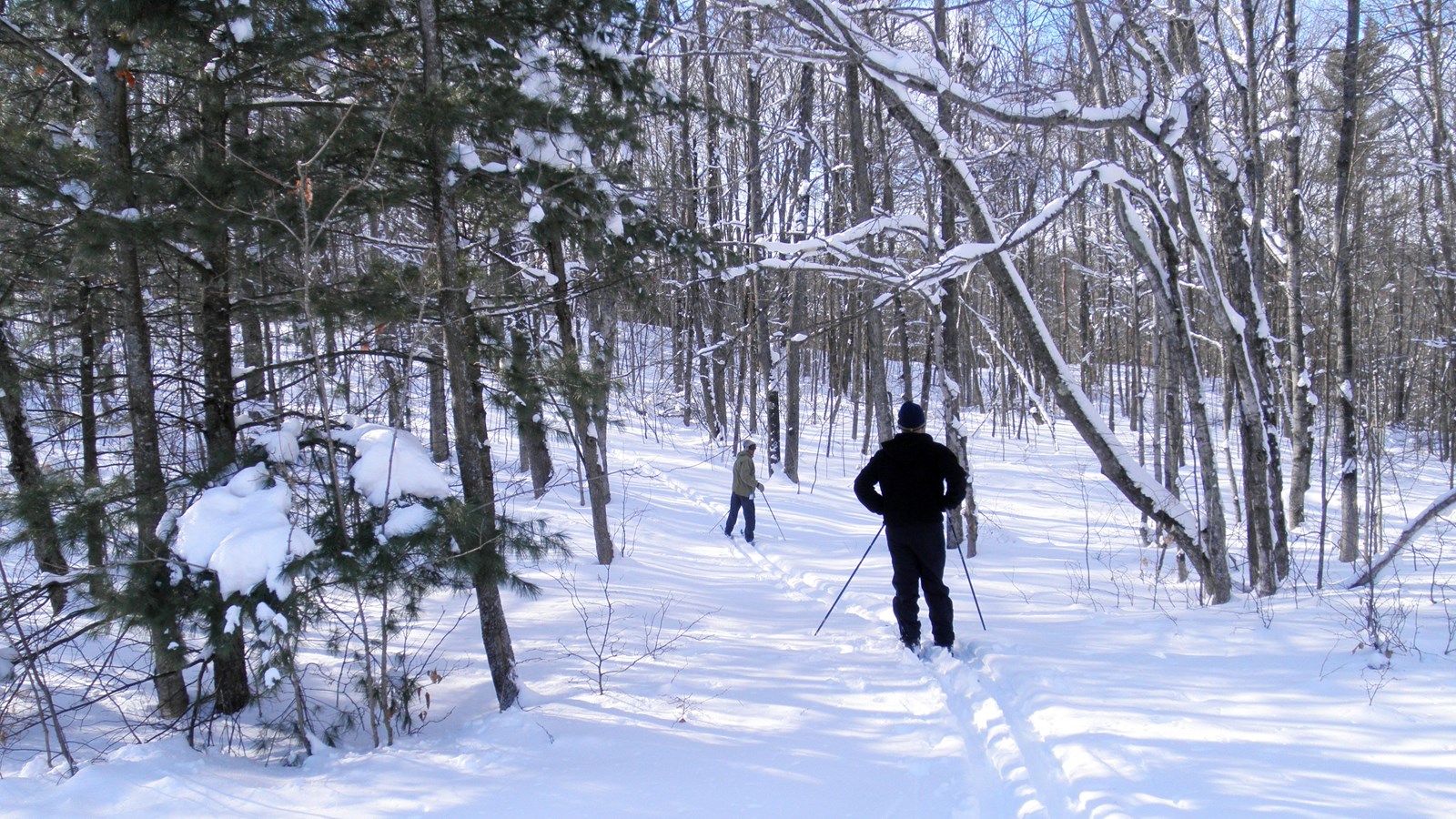Last updated: September 25, 2025
Place
Old Indian Trail

NPS credit
Trailhead
A beautiful loop trail that promises a quieter experience than most trails of Sleeping Bear Dunes, the Old Indian Trail follows a portion of a pathway early Indians established along the coastline and between sites and shorelines where they fished and camped.
Pets are NOT allowed on trail from December 1 to March 31.
Pets are NOT allowed on the beach.
Old Indian has two, 2.3 mile loops. Both loops follow crests of tree-covered ancient dunes. The dunes mark the post-glacial shoreline of Lake Michigan. There is a mix of maple, aspen, oak, and birch with sections of hemlock and pine. In fall the trail is blanketed with a diverse array of colored leaves. Since this trail is relatively isolated and quiet, it is easy to tune in to botanical details like fungi, wildflowers, and dune vegetation.
The terrain of the Green Arrow Loop is flat to gently rolling while the Black Arrow Loop can be challenging with some steep hills and sharp curves. A 0.2 mile spur through an expanse of low beach dunes dotted with shrubs, grasses, and other dune plants leads to scenic views as it makes its way to the Lake Michigan shore.
During warm weather, mosquitos abound so be prepared with insect repellent.
First time hiking in the lakeshore? Follow these tips
Take the Trail Trekker Challenge
Do you think you can hike all of the trails in one year? Want to explore the landscape of Sleeping Bear Dunes National Lakeshore, exercise, and have fun all at the same time? Join the Trail Trekker Challenge! Earn a prize and bragging rights by successfully completing each of the 13 mainland trails in the National Lakeshore. Hiking is a great way to get daily physical exercise and promote health while also discovering the beauty of the area. What better way to get your muscles warm, your heart pumping, and your senses savoring the views!
Pick up a copy of the Trail Trekker Challenge brochure/logbook at the visitor center in Empire.
